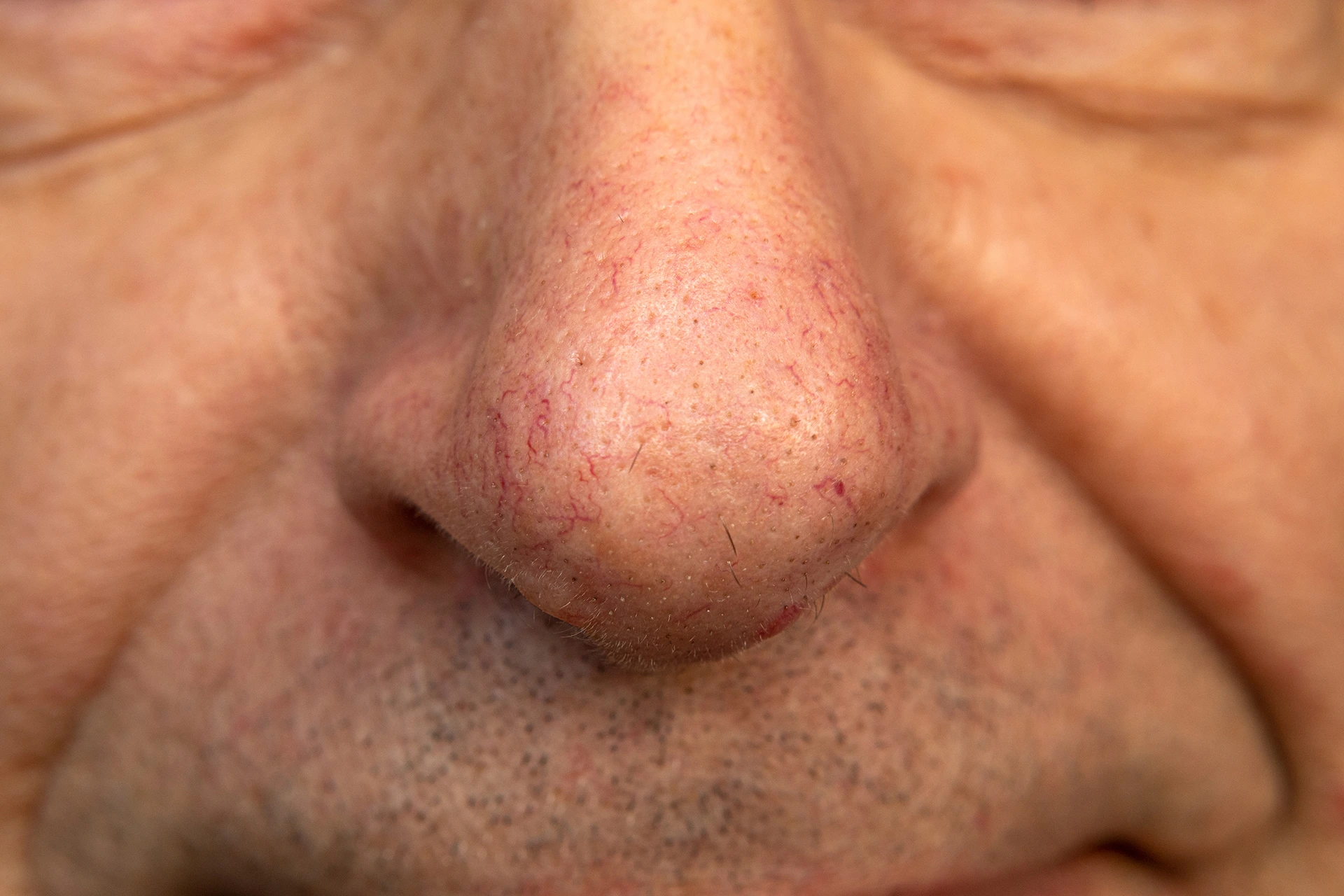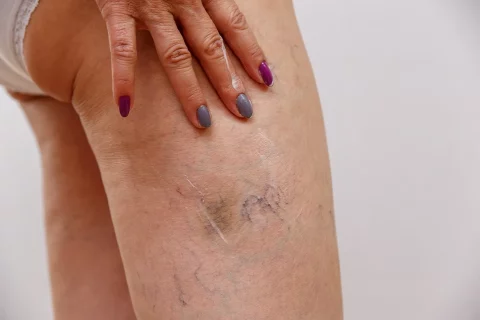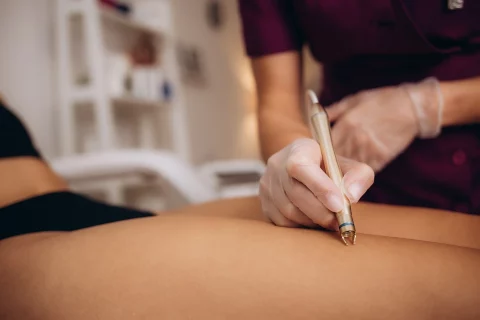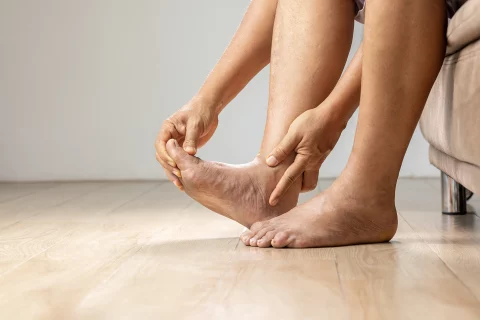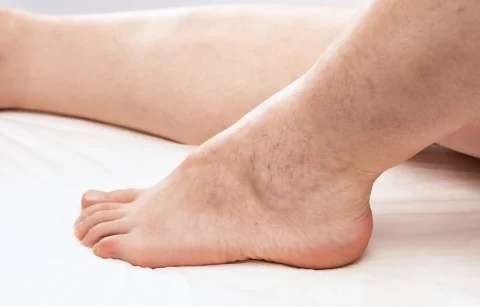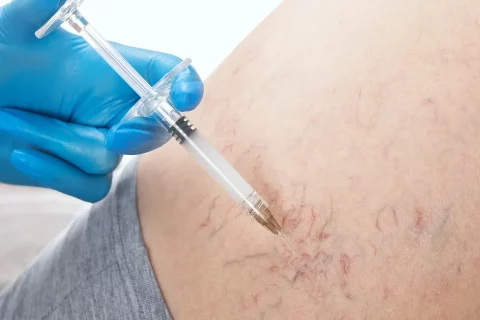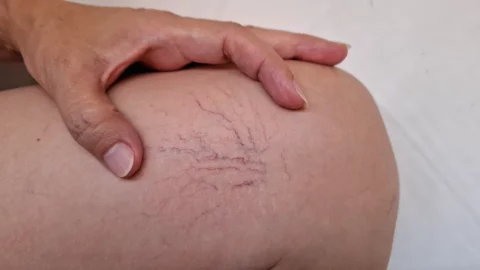Why do thread veins appear on the nose, and what professional and at-home solutions are available?
Understanding Thread Veins on the Nose
Those fine red, blue, or purplish lines marring the sides of your nose have a name – thread veins. Also called spider veins or telangiectasias, these tiny broken blood vessels sit close to the skin’s surface, creating a web-like pattern.
While thread veins are completely harmless, they can be a source of cosmetic concern and affect your self-confidence. Luckily, understanding the underlying causes and knowing your options can set you on a path to clearer skin.
What are thread veins?

Thread veins are a type of dilated blood vessel. Our blood vessels, responsible for carrying blood throughout the body, come in different sizes—arteries, veins, and tiny capillaries.
When the walls of the smallest blood vessels, the capillaries, weaken or become damaged, they stretch out and become more visible through the skin. This creates the characteristic branching appearance of thread veins, commonly seen on the face and legs.
Causes of thread veins on the nose
Several factors can contribute to the development of thread veins on the nose:
- Genetics: Some people are simply more prone to developing thread veins due to inherited tendencies for weaker blood vessel walls.
- Aging: As we get older, our skin loses elasticity, and our blood vessels naturally weaken, leading to more visible veins.
- Sun Damage: Excessive UV exposure from the sun breaks down collagen in the skin, making blood vessels more noticeable.
- Rosacea: This common skin condition causes redness, flushing, and may include visible blood vessels, especially on the nose and cheeks.
- Injury: Trauma to the nose, even from something minor like blowing your nose too hard, can sometimes result in broken blood vessels.
- Other Factors: Hormonal fluctuations, pregnancy, alcohol consumption, and certain medical conditions can increase the risk of developing thread veins.
Symptoms and appearance
Thread veins on the nose are primarily a visual concern. They typically appear as:
- Thin Lines: Red, blue, or purple in color.
- Branching Pattern: Often creating a web-like or starburst shape.
- Location: Most concentrated around the sides of the nose and nostrils, but can also appear on the cheeks.
Most people don’t experience any pain or discomfort with thread veins.
Risk factors and complications
While mainly a cosmetic issue, thread veins on the nose can sometimes signal underlying risk factors, such as a predisposition to rosacea or other skin conditions. In rare cases, thread veins might be a sign of more serious circulatory problems. However, in the vast majority of people, the only real complication is the potential impact on self-esteem.
Treatment Options for Thread Veins on the Nose

If you’re bothered by thread veins on your nose, you’ll be happy to know there are several effective ways to diminish their appearance. Here’s a breakdown of both professional treatments and at-home remedies:
Professional Treatments
For the most significant and long-lasting results, consider these treatments offered by dermatologists and vascular specialists:
- Laser Therapy: This is the gold standard for removing thread veins on the nose. Laser light targets the blood inside the thread vein, causing it to heat up and collapse. Your body then naturally absorbs the damaged vessel, leading to a clearer complexion. Different types of lasers are suitable for thread veins, including Nd:YAG, KTP, and Pulsed Dye Laser.
- Intense Pulsed Light (IPL): Similar to laser therapy, IPL uses a broad spectrum of light to target and damage the thread veins. While generally effective, IPL may require more sessions than laser treatment to achieve the same clearance levels.
- Sclerotherapy: This involves injecting a solution directly into the thread vein, irritating the vessel lining and causing it to collapse and fade. Sclerotherapy is more common for leg veins, but skilled specialists may use a very fine needle to treat certain nose veins.
- Electrocautery/Thermocoagulation: This method uses a small probe to deliver heat that seals off the thread vein. It’s particularly suitable for eliminating very fine spider veins on the face.
At-Home Remedies and Prevention
While at-home treatments generally won’t eliminate existing thread veins, they may offer temporary improvements and help prevent new ones from forming:
- Lifestyle Changes:
- Sun Protection: Always wear sunscreen with a high SPF (30 or above) and practice sun safety measures like wearing a hat and seeking shade.
- Gentle Skincare: Avoid harsh cleansers and products, and opt for a fragrance-free, moisturizing routine to support healthy skin.
- Managing Underlying Conditions: If rosacea or other skin issues are contributing to your thread veins, treating those conditions is important.
- Natural Remedies:
- Vitamin K Creams: Some studies suggest vitamin K may strengthen blood vessel walls, but effectiveness is limited.
- Retinoids: These vitamin A derivatives boost collagen production and may provide a slight improvement in the appearance of thread veins. However, their main benefit is in promoting overall skin health.
- Cold Compresses: This may temporarily reduce redness but won’t get rid of thread veins.
- Camouflage Makeup: Specialized makeup products and techniques can effectively conceal thread veins for a smooth, even complexion.
Important Note: Even professional treatments may not lead to the complete eradication of all thread veins, and new ones may develop over time. Realistic expectations are key!
Choosing the Right Treatment
With several options available for treating thread veins on the nose, choosing the best approach for you can feel a bit overwhelming. Here are the key factors to consider:
- Severity of Thread Veins: The size, color, and number of veins will play a role in determining which treatment is most suitable. Fine, reddish veins typically respond well to laser or IPL, while larger, bluish veins may be better addressed with sclerotherapy or electrocautery.
- Skin Type: Your skin tone and sensitivity are important considerations. Some lasers are better suited for particular skin types, so it’s crucial to discuss this with your dermatologist.
- Budget: Professional treatments vary in cost. Laser and IPL can be more costly per session, but might require fewer sessions overall compared to other options. Be sure to factor in the potential for multiple sessions.
- Desired Outcome: Consider your expectations – are you aiming for the complete disappearance of veins, or would significant improvement be satisfactory? Understanding your goals helps tailor a treatment plan.
Importance of Consultation
The best way to determine the most appropriate treatment is to consult with a dermatologist or vascular specialist. They will carefully assess your thread veins, discuss your individual needs, and recommend a personalized plan to get the best results possible.
Realistic Expectations
While treatments can dramatically improve the appearance of thread veins, it’s important to understand that they may not eliminate them completely. Some people may require multiple treatments or a combination of therapies to achieve their desired outcome. Your provider can help set realistic expectations for managing thread veins in the long term.
Absolutely! Here’s Section 4, where we focus on aftercare and long-term prevention:
Recovery, Aftercare, and Prevention

Most thread vein treatments are minimally invasive and have short recovery times. However, proper aftercare is essential for optimal results and reducing the risk of side effects.
Post-Treatment Instructions
Specific instructions will vary depending on the treatment you receive, but some general guidelines may include:
- Sun Avoidance: Protect the treated area from the sun for several weeks to promote healing and prevent hyperpigmentation.
- Gentle Skincare: Use a fragrance-free cleanser and moisturizer, avoiding harsh products or exfoliants while the skin heals.
- Manage Discomfort: Some temporary redness, bruising, or swelling is common. Your provider may recommend cool compresses or over-the-counter pain relief.
- Follow-up Care: Attend any recommended follow-up appointments with your dermatologist to assess progress and address potential concerns.
Managing Side Effects
Most side effects of thread vein treatments are mild and resolve on their own. However, in rare cases, the following may occur:
- Blistering: If blisters form, contact your doctor to prevent scarring.
- Changes in Skin Color: Depending on your skin type, some temporary lightening or darkening of the treated area may occur.
- Infection: While uncommon, always monitor the treated area for signs of infection like increasing redness, pain, or pus.
Long-Term Maintenance and Prevention
Even after successful treatment, it’s important to focus on prevention to minimize the risk of new thread veins developing:
- Sun Protection: As always, consistent sunscreen use and sun safety measures are paramount to protect your skin and prevent future vein damage.
- Gentle Skincare: Maintaining a healthy skincare routine supports overall skin health and resilience.
- Managing Underlying Conditions: Continue to manage any skin conditions like rosacea to reduce the likelihood of new thread veins.
Remember: Thread veins can be a recurring issue, but with proper treatment and a preventive mindset, you can enjoy clearer, smoother skin on your nose.
FAQs on Thread Veins on Nose
Let’s answer some of the most frequently asked questions about thread veins on the nose and their treatment:
- Are thread vein treatments on the nose painful? Most people experience minimal discomfort during thread vein treatments. Some lasers may cause a slight stinging sensation, and injections for sclerotherapy can feel like a tiny pinch. Topical numbing creams or cooling devices are often used to increase comfort.
- How long does it take to see results from treatment? Results are often visible within a couple of weeks of treatment, although it can take several weeks or months for the full effects to develop as your body breaks down and absorbs the treated veins.
- How many treatments will I need? The number of treatments required varies depending on the severity of your thread veins, the treatment type, and your individual response. Generally, 1-3 treatments are typical for significant improvement, but some people may benefit from additional sessions.
- Are the results permanent? Professional treatments can lead to long-lasting results. However, they don’t prevent the development of new thread veins over time. Sun protection and preventive measures are key for maintaining your results.
- Is thread vein treatment covered by insurance? Thread vein removal is typically considered a cosmetic procedure, so insurance coverage is unlikely. It’s best to check with your insurance provider directly for your specific plan’s details.
- Can I treat thread veins at home? While at-home remedies like creams or cold compresses may offer temporary improvement, they will not remove the thread veins themselves. Professional treatments are necessary for significant and lasting improvement.
Consult with the Vein Center Doctor today for personalized answers and to clarify any further concerns.
Conclusion

Thread veins on your nose, while common, may affect your confidence. Understanding the causes behind them and exploring the range of available treatments empowers you to reclaim a clear complexion. Whether you choose professional treatments for dramatic improvement or focus on at-home care and prevention, there are solutions to help you feel good about your skin.
Remember, a consultation with a dermatologist is the best way to determine your optimal treatment plan. By addressing your individual needs and setting realistic expectations, you can take the necessary steps to diminish the appearance of thread veins and enjoy a healthy, radiant complexion.

